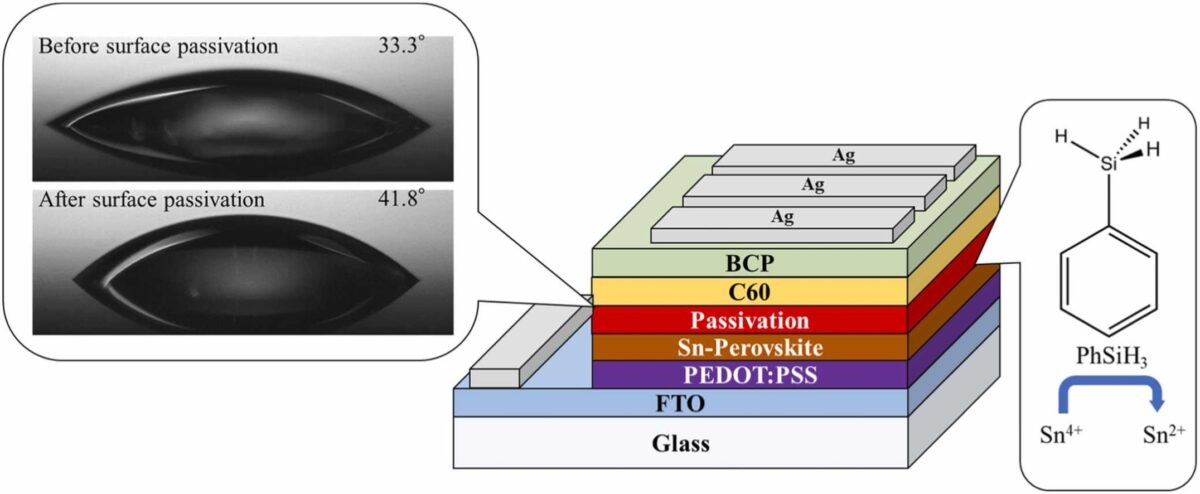Researchers at the University of Electro-Communication in Japan have developed a tin perovskite solar cell with a bandgap wider than 1.6 eV that may be used as a top layer in lead-free perovskite-silicon tandem solar cells.
The scientists acknowledged that replacing lead (Pb) with tin (Sn) in perovskite solar cells implies a considerable reduction in power conversion efficiency and explained that this depends on the presence of tin(IV)-sulfide (Sn4+), which is formed by the oxidation of Sn during the perovskite ink preparation, keeping perovskite inks, or baking the perovskite film.
In order to reduce the presence of Sn4+ concentrated on the surface of the perovskite film, the research group adopted a new passivation strategy based on the use of phenylsilane (PhSiH3) as a reducing agent.
“As far as we know, there is no report on the surface passivation with organic solutions consisting of reducing agents,” it explained, noting that using PhSiH3 results in the formation of a siloxane layer, which creates better contact between the hydrophilic tin perovskite absorber and hydrophobic buckminsterfullerene (C60) used for the electron transport layer (ETL). “After the surface passivation, the contact angle became larger, demonstrating that the perovskite surface became more hydrophobic.”
The academics built the cell with a substrate made of glass and a fluorine-doped tin oxide (FTO), a hole transport layer (HTL) made with PEDOT:PSS, a polymer known for its low cost and easy preparation properties, an absorber made of a lead-free perovskite material known as ASnI2Br, an ETL based on C60, a bathocuproine (BCP) buffer layer, and a silver (Ag) metal contact.
Popular content
The scientists compared the performance of the solar cell with that of a reference device that did not go through the novel passivation treatment. They found the latter achieved an efficiency of 3.65%, while the treated device reached 5.50%, which they said proves the effectiveness of the PhSiH3 treatment.
The results are explained by faster photoluminescence decay after the surface treatment, lower series resistance and higher charge recombination resistance after the surface treatment, they noted. “It was proved that PhSiH3 is effective for decreasing Sn4+ accumulated on the perovskite films and for achieving better contact of the perovskite layer with C60 layer,” they concluded.
The solar cell design and the passivation techniques are described in the paper “Efficiency-enhancement of lead-free ASnI2Br perovskite solar cells by phenyltrihydrosilane passivation effective for Sn4+ reduction and hydrophobization,” published in Next Materials.
This content is protected by copyright and may not be reused. If you want to cooperate with us and would like to reuse some of our content, please contact: editors@pv-magazine.com.



1 comment
By submitting this form you agree to pv magazine using your data for the purposes of publishing your comment.
Your personal data will only be disclosed or otherwise transmitted to third parties for the purposes of spam filtering or if this is necessary for technical maintenance of the website. Any other transfer to third parties will not take place unless this is justified on the basis of applicable data protection regulations or if pv magazine is legally obliged to do so.
You may revoke this consent at any time with effect for the future, in which case your personal data will be deleted immediately. Otherwise, your data will be deleted if pv magazine has processed your request or the purpose of data storage is fulfilled.
Further information on data privacy can be found in our Data Protection Policy.